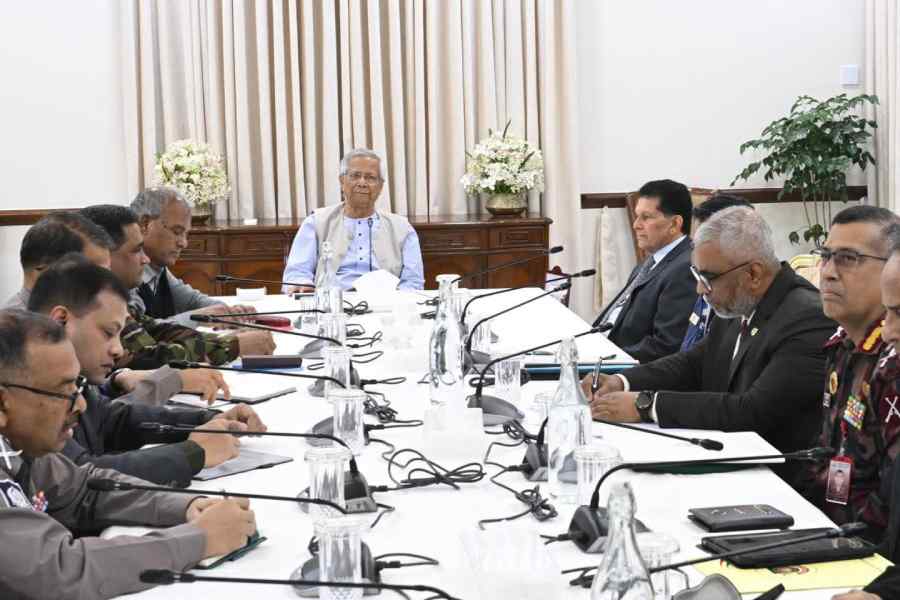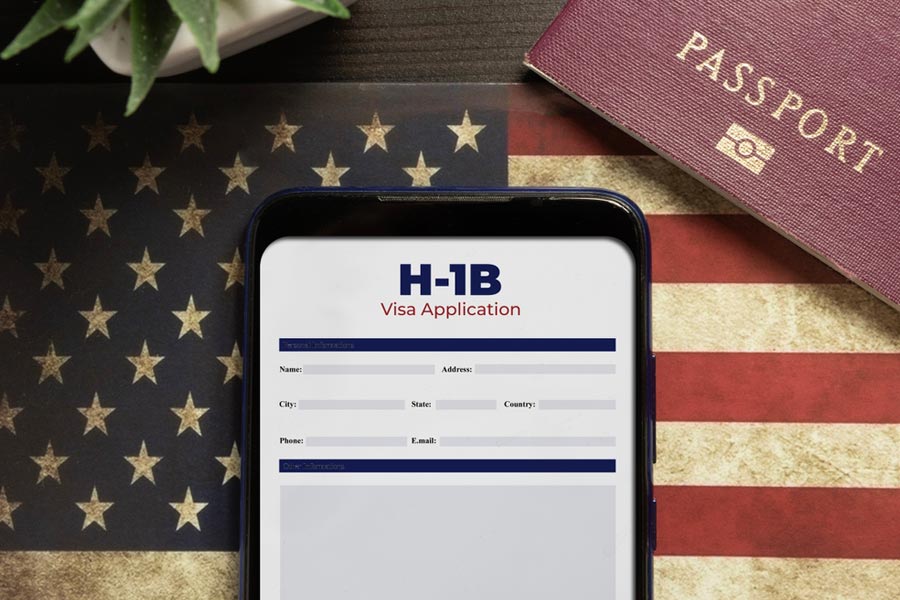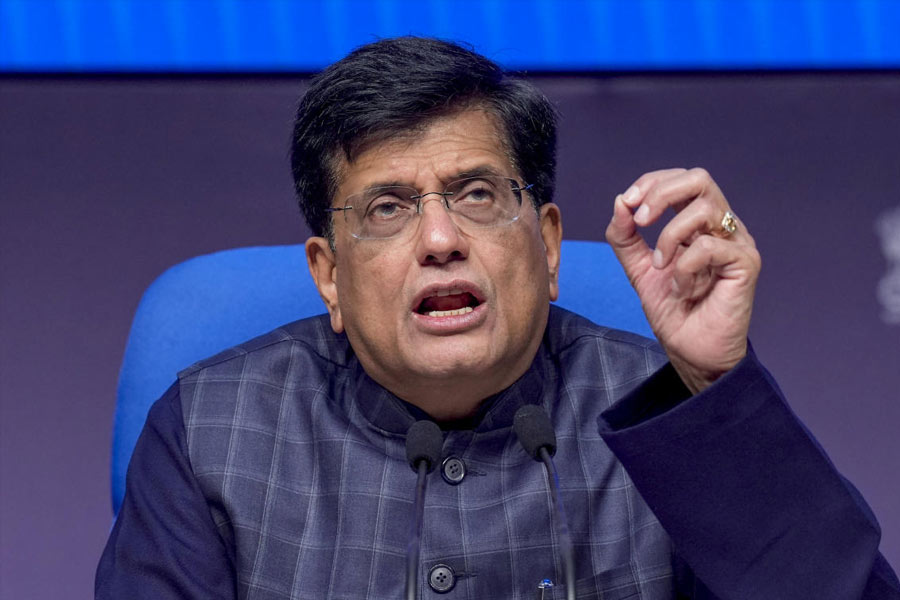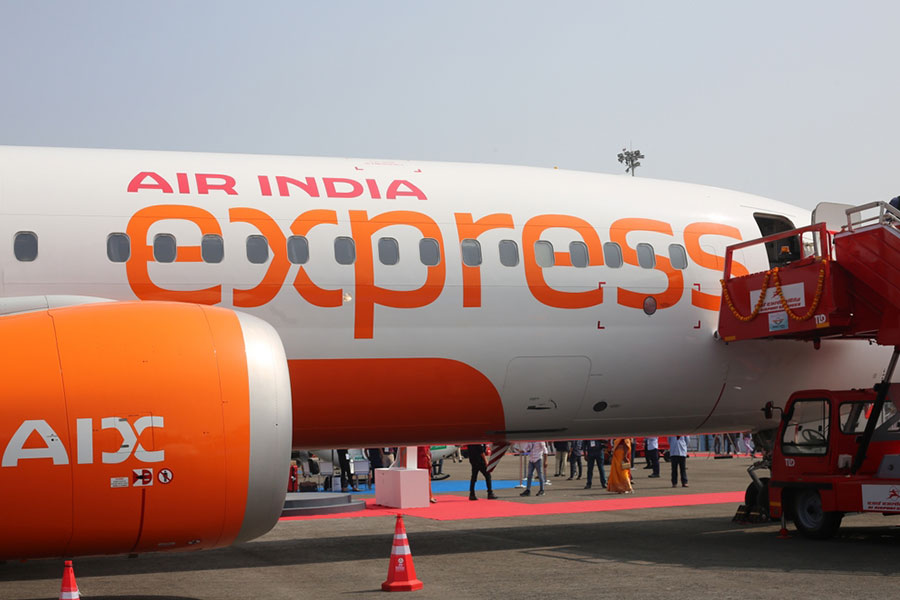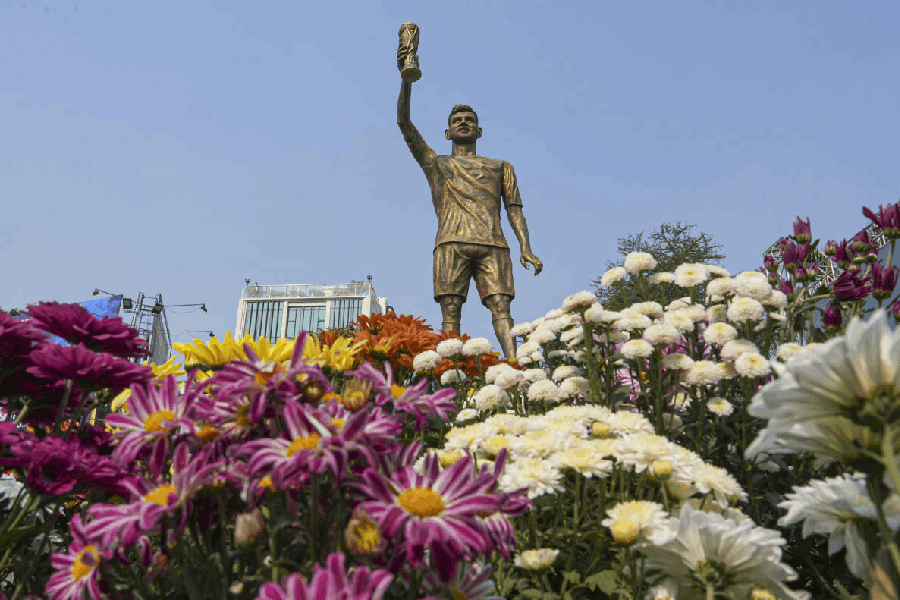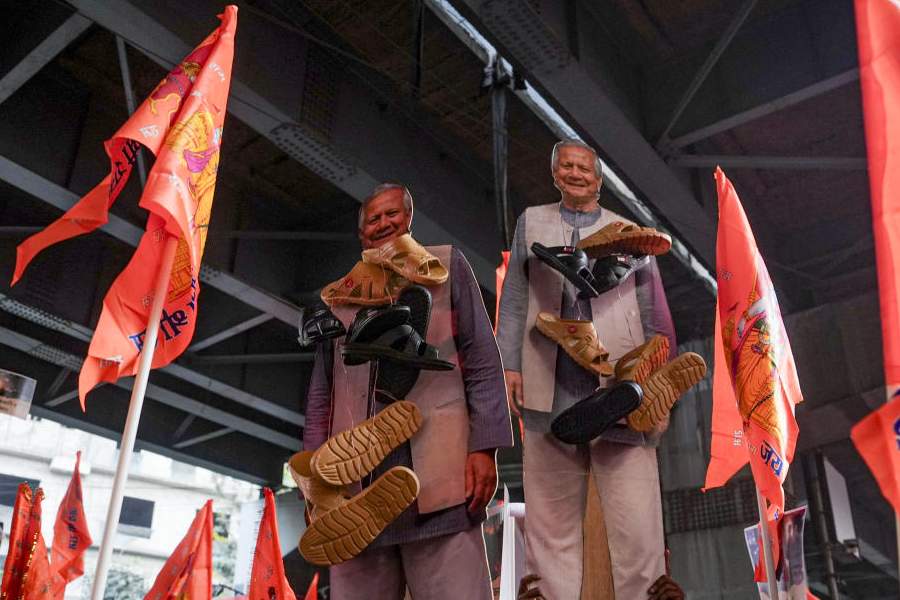.jpg) |
| Visitors to Lhasa’s Potala Palace are watched closely by their guides and cannot stay more than an hour |
In my mind, a ride on flight MU 5939 from Zhongdian to Lhasa easily qualifies as one of the most enthralling experiences at 36,000ft. The plane lifts off from an airstrip with towering craggy mountains on all sides. It swiftly gains altitude and climbs over the snow-specked ridges that guard the valleys of North Yunnan, before easing into a steady west-northwest course across the Tibetan Plateau.
Soon, the curtain of puffy clouds lifted to reveal a world below of barren Martian mountains the hue of rust and snow-washed summits piercing stray tufts of cumulus. Then, there are dark gaping ravines with silvery rivulets snaking through them and turquoise lakes nestling in the folds of gargantuan glaciers. For a moment, I felt like an intrepid astronaut on a low-cost space journey.
We were midway through a 4,000km odyssey following the ancient Tea & Horse Road from Kunming in South China to Kathmandu via the Tibet. But the difficulties of modern border controls forced us to clamber on board a China Eastern flight that catapulted us from the hills of North Yunnan to Lhasa in a little over 90 minutes.
But there are compensations of travelling by air. Shortly before landing, we gazed down in awe at the Brahmaputra River (locally called the Yarlung Tsangpo) tracing Medusa-like patterns across the parched landscape.
Another 10 minutes later, we made a smooth touchdown at Lhasa’s shiny international airport. We were met by our cheerful Tibetan driver-guide duo of Lobsang and Tenzin who — after greeting us with white silk scarves — packed us into an SUV for a 70km zip along a six-lane expressway to Lhasa.
The entry into Lhasa is dramatic, to say the least. Turning a bend in the road about 10km short of city limits, we suddenly saw the majestic silhouette of the Potala Palace — the former residence of the Dalai Lamas and the erstwhile seat of the Tibetan government — rising against a hilly backdrop in the distance.
.jpg) |
| Ancient murals adorn the hallway at the Jokhang temple in Lhasa |
But Lhasa has changed since the days of the Dalai Lamas. So we had to steer through a network of roads and flyovers, and then pass through Lhasa’s gleaming business district, before hitting the congested old town — our haunt for the next two days.
The fact is that Lhasa is now much like any other booming Chinese city. On every tree-lined avenue, upscale mom--pop restaurants jostle for shop space with plate-glass storefronts owned by global designer labels. In exchange, however, the city has traded in much of its innate Tibetan character, for better or worse.
In the old part of town, however, where most travellers pitch tent, the Tibetan essence has been carefully preserved. Walking around Barkhor Market, Lhasa’s town square, we soaked up this antique essence, exploring souvenir stalls selling curios and semi-precious jewellery. Meanwhile hundreds of devout Tibetans were going about their daily circum-ambulations, circling the hallowed Jokhang Temple.
Constructed in the 7th century by the Tibetan king Songt sen Gyampo, the Jokhang is a fascinating building that contains several chapels consecrated to Tibetan deities. Notable among them are the ornate statues of Maitreya (the Buddha of the future), the 8th Panchen Lama and Guru Padmasambhava — the founder of Tibetan Buddhism — housed in the temple’s inner sanctum.
Jokhang’s most valuable treasure, however, is a 6th-century gold statue of the Sakyamuni Buddha, which happens to be the holiest relic in all of Tibet. We were utterly smitten by the beautiful idol but photography’s strictly prohibited.
Later that evening came the high point of our Lhasa sojourn when we climbed nearly 1,000ft along an ancient stone stairway to explore the cavernous Potala Palace. Today the palace has been turned largely into a museum.
Tourist flow is strictly regulated and visitors must stick close to their guides, and exit within an hour. Also, tourists are only allowed to walk along a well-demarcated trail that takes them through the main assembly hall, a series of chapels devoted to Buddhist deities, the terraces of the palace and a few quarters, such as the former office and prayer room of the Dalai Lamas.
.jpg) |
| Just before landing in Lhasa we got a spectacular view of the Brahmaputra’s emerald waters |
Even though it’s rushed the trip’s still mesmerising. Maintained by resident monks, the Potala Palace contains a matchless treasure within its vaults. There are countless grand gold and silver statues of Buddhist deities, a series of cenotaphs — built with thousands of kilos of gold and studded with precious stones — dedicated to former Dalai Lamas and heaps of relics in the form of scroll paintings and precious objects of art.
Photography, once again, is prohibited and we thus walked out after our tour with no lasting evidence of our visit. ‘Maybe treasures like these should only be enjoyed up-front, and not in Facebook photographs, yeah?’
Lobsang mused later that evening. Indeed, we agreed, as a waitress placed generous servings of chicken butter masala and naan — our first Indian meal in two weeks — on our table. Yes, believe it or not, butter chicken has made it all the way to Lhasa.
There we were driving through the vast expanse of the Tibetan Plateau and being buffeted by the howling winds. Suddenly, I found myself not exactly marvelling at Chinese industrial mimicry.
‘Wait a minute!’ I barked at Tenzin, our Tibetan driver-par-excellence, shuddering with disbelief. ‘You’re saying this is a fake Pajero? Seriously? You mean we travelled 1000km through this most formidable landscape in a fake?’
Tenzin flashed a wry smile, even as he kept his eyes trained on the apology of a road that stretched into the vast emptiness in front of us. It was seven in the morning, and we were slowly bumping through an open grassland, on the most difficult section of our three-week journey that ended at the base of Mt Everest.
The nearest human habitation — Tingri Village where we camped last night — was almost 40km behind us, and it was another two hours to Rongbuk, a tiny monastery at 17,000ft. Needless to say, a simple mechanical breakdown here could maroon us as badly as one Mr Crusoe.
The road we were travelling on was not much better than a dirt track.
.jpg) |
| Yak skulls are among the souvenirs on offer in the Lhasa markets |
But hey, we were in a Pajero, right? We had assured ourselves all along while we bumped and skidded through the cold desert.
Since driving out of Lhasa six days ago on the last leg of our 4000km journey along the ancient Tea & Horse Road, we had breezed down the Friendship Highway, crossing countless snowy mountain passes above 15,000ft and careened through precarious mudflats and glacial melts in Tenzin’s vehicle, which deceitfully flaunted the three-pronged marque of the legendary Japanese SUV.
The first stop after Lhasa was Tsedang, an ancient administrative outpost home to the Samye Monastery, believed to have been built by Padmasambhava — or the great Guru Rinpoche — during the establishment of the Buddhist order in Tibet in the 8th century.
After exploring the intriguing hallways of the medieval structure, we had driven through a fascinating landscape, scaling the 16,500ft Gamba La Pass and cruised by the pristine banks of the Yamdrok Tso, a turquoise lake at 14,500ft (one of Tibet’s four holy lakes).
After camping briefly in the trading town of Gyantse, we had pushed ahead to Shigatse, Tibet’s second-largest city and home to the famed Tashilhunpo Monastery, a 15th century structure that was traditionally the seat of the Panchen Lamas. Exiting Shigatse, we had then driven a further 250km —reaching the highest point of our journey at the 17,300ft Gyachho La Pass —to reach Tingri last evening.
Sticking to our plan, we had broken camp at the crack of dawn, with the intent of off-roading 75km through an uninhabited stretch of the plateau to see the famed North Face of Mt Everest from base camp. At this point we had requested Tenzin to shift to four-wheel drive.
That’s when he spilled the beans. Apparently, our vehicle didn’t have the all-important 4x4 mode. ‘Don’t worry,’ said Lobsang, our guide, coming to Tenzin’s rescue. ‘This isn’t the first time we’ve come this way. Rest assured, all will be well.’
Miraculously enough, Lobsang’s words eventually came true. Tackling the harsh conditions one spin of the wheel at a time, Tenzin skilfully guided us through innumerable canyons, passes, ridges and river beds until we finally climbed on to a flattish trail leading in the direction of a mountain wall. Meandering sharply from side to side, we worked our way around the barrier, and soon found ourselves driving into a high-altitude valley.
 |
| Our route from Kunming to Everest Base Camp |
Leaving our worst fears behind, we looked ahead in relief, and saw the gigantic North face of Mt Everest shooting 12,000ft into thin air directly ahead of us. It towered above the mountain-scape and the vast ice-fields on its slate-black slopes gleamed in the glow of the midday sun.
Rendered breathless both by the sight as well as the rarefied atmosphere, we spent the next two hours in a stupor-like state, wandering around base camp and admiring the sublimely beautiful scenery that surrounded us on all sides. After paying a visit to the nearby Rongbuk Monastery and chatting with a few Chinese soldiers posted at a military camp nearby, we settled down in a rudimentary restaurant for lunch. Slurping down a bowl of steaming hot noodle soup and fried chicken, we continued to stare at the commanding profile of Everest looming outside the window.
Then, as the sun slowly began to tip towards the western horizon, Lobsang slowly beckoned us to our vehicle. Snapping out of our reverie, we realised that our journey had indeed drawn to a close. In less than 24 hours, we would be thawing out in Kathmandu in Nepal, several thousand metres below, before boarding our flight back home.
Taking one last glimpse of Everest, we fastened our seat belts as Tenzin roared the engine back into life. Khali Shu, (goodbye), he said to the mountain, urging us to do the same, as we slowly drove out of the heavenly amphitheatre and began our descent to reality.
Photographs by author





